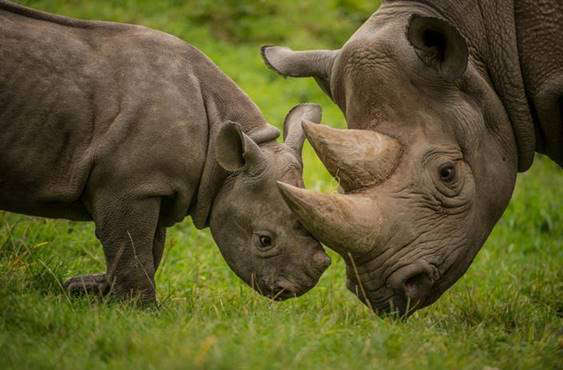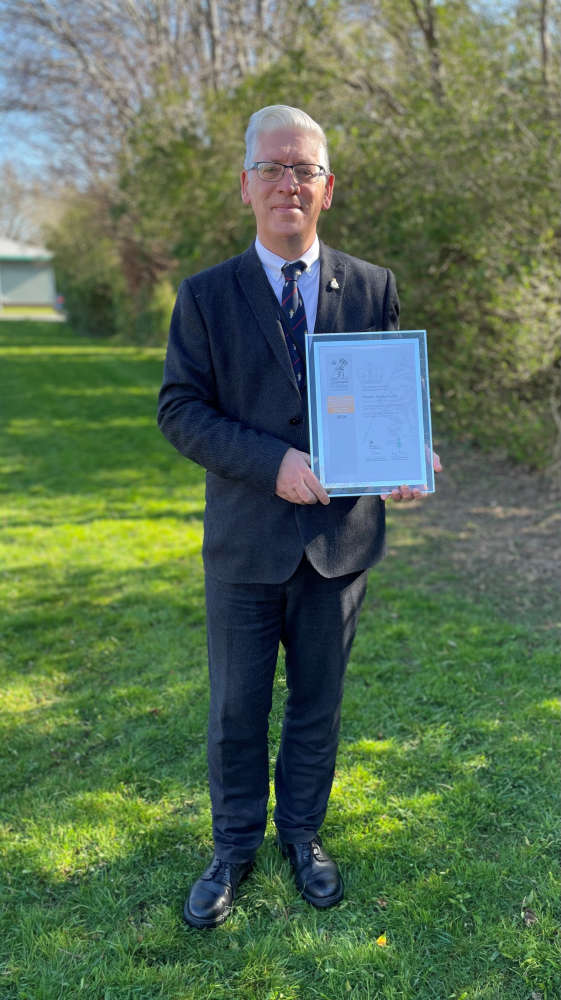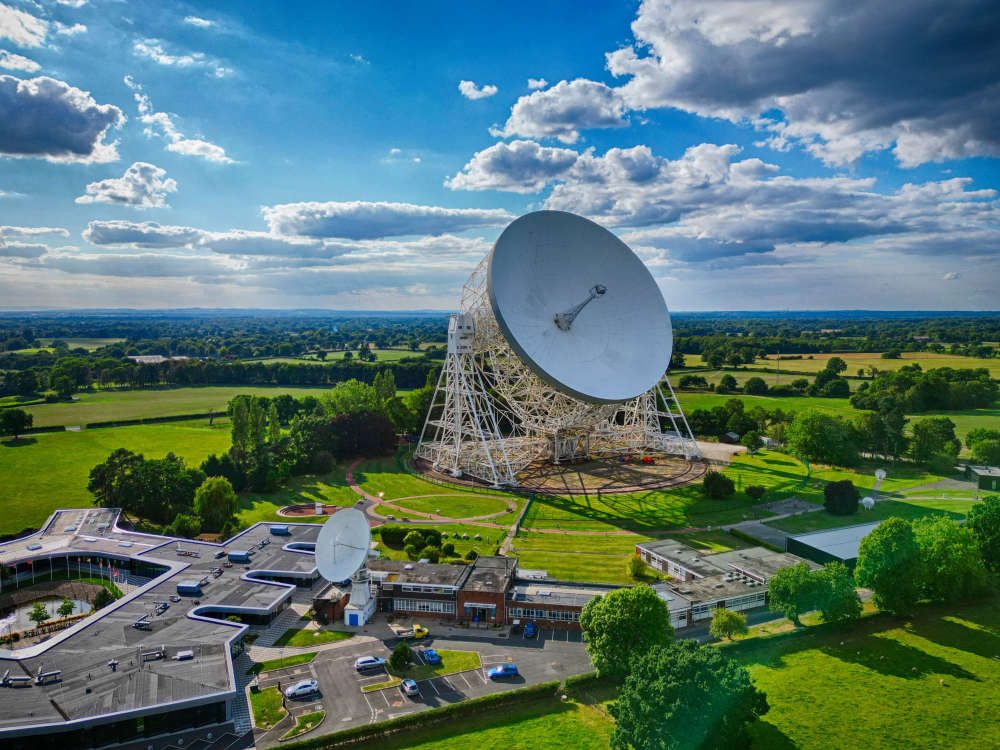
Ahead of what conservation experts have labelled a “crucial summit” on biodiversity this spring, a new paper, released today, has revealed Chester Zoo’s plans to step up its global role in preventing extinction.
World conservation leaders will gather in China for the COP15 summit this April to discuss the planet’s nature crisis and set a plan to tackle it, as one million species are currently at risk of extinction.
The charity zoo, which last year turned 90 years old, plays a crucial role in preventing extinction with its species-saving work with highly threatened animals and plants.
Currently, the zoo is fighting to protect wildlife at the request of the Spanish, Portuguese and Bermudan governments and is actively working with more than 100 partners in 20 different countries.
The zoo recently received a glowing endorsement from the International Union for the Conservation of Nature (IUCN) - the global authority on the status for the natural world – for the difference it is making.
Jon Paul Rodriguez, Chair of the IUCN’s Species Survival Commission, said:
“As one of the world’s leading conservation-based zoos, Chester Zoo is playing a special role in tackling the global biodiversity crisis.”
Last week, the zoo made headlines all around the world for its work to help save a tiny Mexican fish – the tequila splitfin – from extinction. It has also had similar recent successes when it led a mission to return a group of critically endangered Eastern black rhinos, bred in zoos in Europe, to Rwanda; reintroduced thousands of tiny snails, once believed to have disappeared altogether, to Bermuda, and devised an initiative to make the city of Chester the world’s first sustainable palm oil city, as part of a campaign to protect forests and orangutans in Borneo.
Jamie Christon, Chester Zoo’s CEO, said:
“Our zoo is having a real impact on conservation. As a major wildlife charity, we’re making a colossal contribution to tackling the global extinction crisis at a time when it’s needed most.
“The wonderful thing about our charity is our ground-breaking conservation model. When people visit the zoo, not only do they connect with and learn about wildlife and nature, they help us to generate the vital funds needed to tackle some of the world’s most pressing conservation challenges.
“We are fighting extinction through our conservation, education and research work, here at the zoo, across the UK and around the world. This work is only possible because of the success of our pioneering conservation model and we’ve spent £180m supporting this over the last decade. Without the zoo, it’s highly likely that a number of species that we share our planet with would have vanished.”
As well as generating revenue to plough into its conservation efforts, the zoo continues to grow as a world-renowned centre for scientific research, a conservation academy training more than 400 conservationists a year, a place to engage its two million annual visitors with conservation and a centre for preventing extinction.
The zoo works with more than 3,000 species globally, including 140 international conservation breeding programmes, led by science, which are working to ensure genetically viable safety-net populations of species in leading zoos around the world. It also works with NGOs across the world to transfer the knowledge and skills built up at its site in Chester.
Dr Simon Dowell, the zoo’s Conservation Science Director, added:
“We hear lots about how climate change and habitat loss could push more than one million species to extinction in our lifetime. It’s rather frightening and, at times, may lead to a feeling of hopelessness. What’s important though is that we do have solutions to the biodiversity crisis and there are conservation organisations, such as ours, doing everything we can to halt and reverse the decline.
“Good zoos, with professionally planned science-led conservation at their core, are more relevant to the fight to prevent extinction than ever before. We are in a unique position to provide immaculate levels of care for threatened species, protect and restore wild habitats, foster deep and lasting connections with nature, and inspire the next generation of conservationists.
“Our zoo is a shining example of what real conservation action in the 21st century looks like. We have a vital role to play in securing a future for wildlife on this planet. That’s why we have devised an innovative Conservation Masterplan – an ambitious set of goals for the next 10 years - and our aim now is to do more and more to protect the natural world and prevent extinction.”
Read the full paper, here.
Chester Zoo’s global impact on conservation at a glance:
- Chester Zoo works with more than 3,000 species globally, including 140 international animal conservation breeding programmes, led by science, which are working to ensure genetically viable safety-net populations of species in zoos. It is also home to five national plant collections, comprising of more than 1,000 species
- The zoo’s experts are recognised by governments and NGOs across the world as leaders within the global conservation community. Currently, the zoo is saving species on behalf of the Bermudan, Spanish and Portuguese governments, among others
- The zoo works with over 100 partners in more than 20 countries to recover threatened wildlife and restore habitats, including orangutans in Bornean rainforests, elephants and tigers in Indian grasslands, lemurs and frogs in Malagasy forests and rare fish in Mexican lakes
- The zoo’s millions of visitors and huge online communities are part of the educational, scientific and conservation jigsaw, empowering them to be part of solutions for wildlife
- Every year, the zoo inspires more than 265,000 young people in conservation education programmes
The zoo influences policy both in the UK and internationally, forcing governments worldwide to take action to halt the biodiversity crisis.
Pictured - Critically endangered eastern black rhinos at Chester Zoo – one of hundreds of species conservationists at the zoo are fighting to protect.

 Ten arrested for drugs offences following warrants in Chester
Ten arrested for drugs offences following warrants in Chester
 Ten arrested for drugs offences following warrants in Chester
Ten arrested for drugs offences following warrants in Chester
 Suspended prison sentence and indefinite ban for Cheshire man who abused his dog
Suspended prison sentence and indefinite ban for Cheshire man who abused his dog
 Recovered Stolen Items
Recovered Stolen Items
 Man charged in relation to courier fraud
Man charged in relation to courier fraud
 Police to target criminal use of Cheshire’s roads
Police to target criminal use of Cheshire’s roads
 Council awarded Gold Armed Forces Award
Council awarded Gold Armed Forces Award
 Appeal for footage and witnesses following collision in Delamere
Appeal for footage and witnesses following collision in Delamere
 Appeal for information following serious collision in Chester
Appeal for information following serious collision in Chester
 Your chance to get involved in police scrutiny meetings
Your chance to get involved in police scrutiny meetings
 New Events at Jodrell Bank
New Events at Jodrell Bank
 Inspiring Futures at The Queen’s School
Inspiring Futures at The Queen’s School
 Bowmere Hospital celebrates 20 years of mental health care
Bowmere Hospital celebrates 20 years of mental health care
 Man charged with burglary and drug offences following Chester police stop check
Man charged with burglary and drug offences following Chester police stop check
 Vicars Cross Road closed following collision in Chester
Vicars Cross Road closed following collision in Chester
 Man jailed for controlling and coercive behaviour and assault
Man jailed for controlling and coercive behaviour and assault
 Plan unveiled to transform and improve emergency care at Countess of Chester Hospital
Plan unveiled to transform and improve emergency care at Countess of Chester Hospital
 Chester & Wirral Football League - Weekend Round Up
Chester & Wirral Football League - Weekend Round Up
 Ladbrokes returns to Chester Racecourse
Ladbrokes returns to Chester Racecourse
Comments
Add a comment